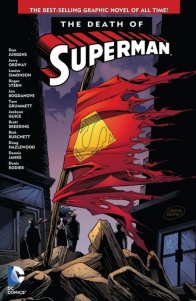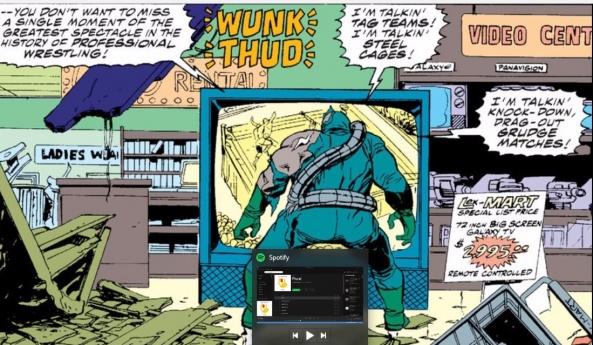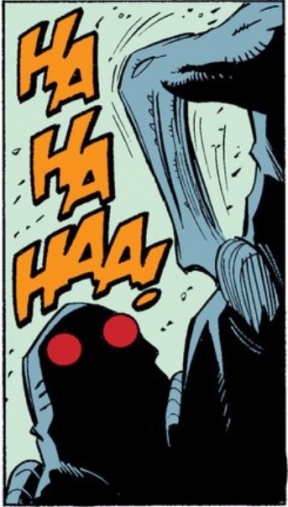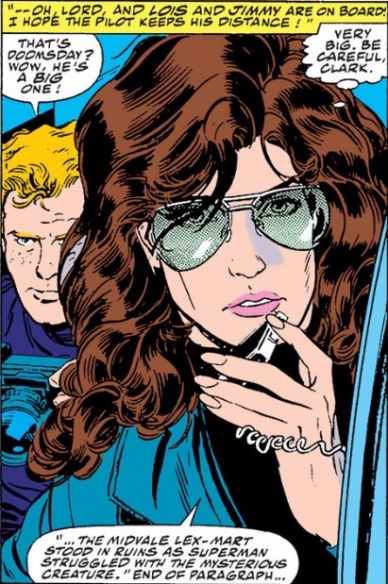I was ten years old when the, then ‘Doomsday,’ now ‘Death of Superman,’ arc began, running through DC Comics in late 1992. At the time, I was an avid comics reader, and while familiar with the concept of death in comics – specifically of Jason Todd a few years earlier – the concept of killing Superman seemed nearly impossible to me. Having not read the complete storyline since it was coming out new, I was interested to see how this arc – perhaps the start of the modern age of comics – held up. Because we all know Superman died, I don’t think I need to tag this spoilers, but who knows.

Written by Dan Jurgens, Louise Simonson, Jerry Ordway, and Roger Stern
Illustrated by Dan Jurgens, Butch Guice, Dennis Janke, Tom Grummett, Jon Bogdanove, Denis Rodier, Brett Breeding, and Rick BurchettThe story that drew national media attention when DC Comics killed their greatest hero is collected here. When a hulking monster emerges from an underground resting place and begins a mindless rampage, the Justice League is quickly called in to stop the colossal force of nature. But it soon becomes apparent that only Superman can stand against the monstrosity that has been nicknamed Doomsday. Battling their way throughout America, the two fight to a standstill as they reach the heart of Metropolis. Going punch for punch, Superman finally ends the threat of Doomsday as he throws one last punch and collapses forever.
There has been a lot of criticism of this story over the past 25 years, and with good reason: reading it now, it is a string of missed opportunities and weird creative choices, all probably justifiable in the moment. This is an ‘event’ comic before the industry really figured out how to effectively do event comics, so you have things like the overarching mystery of the Justice League’s mysterious new member popping up in the middle of an even that is only using the Justice League to act as punching bags. Or, you get an opening issue that is only tangentially related to the event at all, and instead was wrapping up story beats from prior issues.
But I was surprised at how effective the whole thing felt also; Dan Jurgens and crew got a lot right about Superman in these pages, and present some pretty compelling arguments for why Superman is the greatest superhero of all time, without ever really coming out and saying that.
An overarching thought I had while reading this was an acknowledgment of just how much comics writing has changed in the ensuing 25 years. If you read older comics with any sort of frequency, that won’t be a huge shock to you, but holy cow did folks use thought bubbles a lot! I would say that a good 90% of Superman’s motivations across these 7 issues. He’s not just thinking “Oh shit, this guy is really tough!” but he’s laying out character motivation for the entire event. He’s almost comically responding to the reader at points, like when he hears Mitch (more on him later) call out for help, we hear Superman’s internal calculus of “well, these innocents need my help, but if I let Doomsday go, he could potentially kill millions!” Of course, this being 1992 and Dan Jurgens, it isn’t quite that succinct.
It is obviously impossible to imagine how this story would read without all the thought bubbles, but I can imagine it wouldn’t really change all that much in the grand scheme. They are useful for a number of reasons, but ultimately just slow down what should be a wall to wall slobberknocker of an event.
It is exactly its slockberknockicity that is the main flaw in the event, both then and now. Doomsday appears out of nowhere, with no motivations whatsoever, and tries to destroy whatever he runs into. The fact that he runs into Superman is almost accidental, and the fact that Metropolis is his final stop is because he sees a commercial for pro-wrestling in a LexMart. I’m not joking.

Superman’s rogues gallery is one of the most developed and beloved in all of comics, with some serious heavy hitters at their disposal. If Lex Luthor finally killed Superman, that would be a story for the ages. Ditto Brainiac, Bizarro, Metallo, hell, even Mr. Mytzlplk would have seemed like a longtime story coming to its logical, if not temporary, conclusion. I know that having Doomsday appear out of nowhere and be an unstoppable killing machine is an interesting twist on the role of a superhero; instead of being able to predict his assailant’s movements and motivations, Superman is forced into pure instinct.
Continued belowI can see the appeal of that, especially at a time when DC was trying to shake up its line. No one would ever see this coming – except that it as advertised heavily beforehand. If, out of nowhere, this random killer struck, taking Superman out, that would be shocking. But as long as you are pre-selling the event – which DC did to an almost hilarious degree – it can’t be a surprise.
If Jurgens + co. used even 10% of the thought bubble space for establishing Superman’s frustration or confusion over his motivations, that would, too, have worked nicely. But that’s not the case here at all – sure, a few times Superman (or various telepaths) seem to reiterate that Doomsday is pure rage, but a little more space to the ‘why’ question would have been welcome.
Having said that, the last few issues really do ramp up the intensity, and bring the ‘final’ conflict to a place where it feels as epic as it needs to for an effective sell. Everything Superman says aloud from the fourth issue or so on feels like classic Superman – he’s always looking out for the innocents, he’s telling Lois he loves her, he’s plotting a way to stop Doomsday – it feels like classic Superman. Even if the build to that moment feels rushed and maybe a little dumb, the moment itself is handled in an epic fashion.
In the final issue (with layouts by Jurgens and finishes by Brett Breeding), there are no panels, only one and two page splashes. I understand the position that this hurts the story’s sequential storytelling, and while I would usually agree with that assessment, it works here. As the issue winds down, we get a number of really iconic shots: a battered Superman kissing a teary Lois, the Kents holding each other in Kansas as they weep over their son’s loss, the final blow being only depicted through Jimmy Olsen’s camera lens and, on the penultimate two-pages spread, in an nod to the Pietà, Superman being cradled in Lois’s arms.
I’ve always found the final page of the book really bothersome:

Can you imagine dropping the one you love’s dead body on the ground? If that were me, and I was holding my wife, I don’t know what would have to happen for me to let go. Get stung by a bee? Really have to pee? I don’t know. But Lois just drops Clark like he’s a ragdoll.
Ultimately, it is the shots of Lois and the Kents that really make this whole event work for me. Sure, the world at large would be bummed if Superman died, but to see his loved ones grieve, while knowing that he is doing what he is ‘supposed’ to do really makes the emotions land in a way that the rest of the story doesn’t.
So, how does the whole event hold up? That depends; on one hand, by the end of the collection, you can feel the tension and pain, with a really powerful climax, even if the fight itself ends somewhat abruptly. But this can’t help but feel like a missed opportunity – and an incredibly dated work in a lot of regards.
Random Observations: (with apologies to the AV Club’s “Stray Thoughts”)
– Man, Dan Jurgens wasn’t any better at writing teenagers in the early 90’s. Mitch, the young Guy Gardner fan (?) that eventually is saved by Superman is such a little shit to his mother that I was actively rooting for him to die. I’m not joking: he tells his mom that her inability to keep the fridge stocked with soda is probably why his dad left. Fuck that kid, even if he does go on to found the Supermen of America.
– Louise Simonson, in the first issue of “Superman: The Man of Steel” in this collection also tells a story of a boy and his mom, and it is so fucking sad, even if it is cliched. Keith, a young orphan, believes that the monsters of the Underworld have taken his mom, and when he finds out that’s not true, he thinks (via the ever-present thought bubbles): “I just wanted to believe that I could find her and save her and make her love me.” God damn, Louise.
Continued below– I also forgot how goofy “Superman: The Man of Steel” was at the time. At least based on these issues, it seemed to be the title that took itself the least seriously; or maybe it just seems that way due to Jon Bogdanove’s looser, more cartoony artwork. It allowed Superman to do things like put grenades in indestructable monsters’ mouths and let them swallow an explosion like Wile E. Coyote:


– It was weird to see Jurgens have Blue Beetle be as serious and as in control of the Justice League America here. I know that Superman was technically the leader, but in his absence, Ted really takes control. I’m not saying this as a bad thing, it is just unexpected. Most writers totally ignore Ted’s non-buffoonery, especially in this era.
– The “old men are writing these book” alert: a character unironically tells someone to ‘amscray.’
– Jurgens’s artwork impressed me throughout. His Superman is considered classic, and rightly so, but I was impressed with how his Doomdsday was used, especially early on, when still somewhat sheathed. In this panel, Jurgens (with finishes by Rick Burchett) evokes an almost Mignola-esque simplicity:

– Speaking of that panel, I forgot how much Doomsday laughs at things dying/getting broken. I recalled him being pure chaos and evil, but not particularly sardonic about it. I stand corrected.
– By far the most dated character, in terms of looks, is Lois. She is dressed like a Murphy Brown extra, with dark, bug-like sunglasses and shoulder pads that reach from wall to wall. While I’m not a huge fan of Lois just being ‘that woman with brown hair,’ as she often becomes, her branding here was a little funny.

– If you’re not familiar with the “Matrix” version of Supergirl and picked up this book, this image probably made you scream “WHAT THE FUCK,” and I can’t say I blame you:

– Supergirl was also the slave/lover/property of Lex Luthor at that time, but not the old, bald Lex, the “son” of Lex, with his big red beard, who wasn’t really…oh, just go to Wikipedia.
– The one bit of Superman’s story that really rang false to me was just how upset he was that Doomsday was attacking Metropolis. He essentially says “I was mad before, when you killed hundreds of regular Americans, but come to my city and you fuckin’ die.” It seems a little at odds with his whole identity of, you know, protecting everybody.






